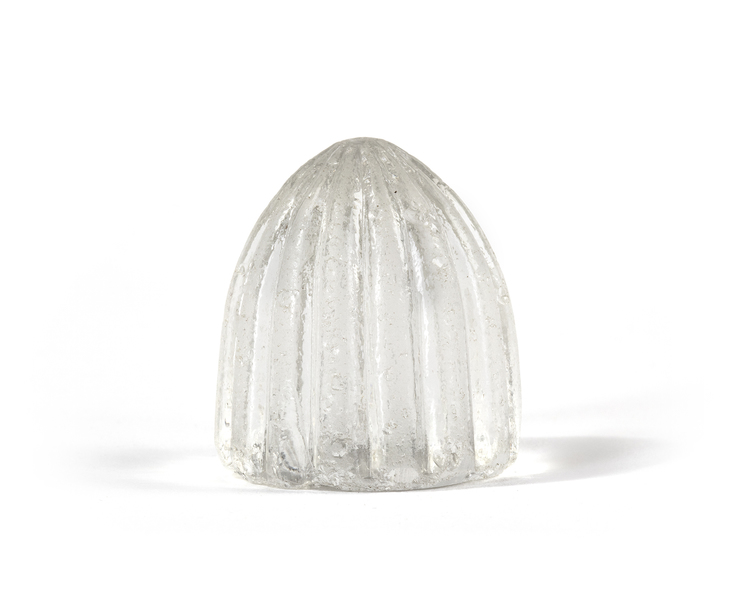A FATIMID ROCK CRYSTAL CHESS OR BACKGAMMON PIECE, EGYPT, CIRCA 11TH CENTURY
The rock crystal of domed cylindrical form with vertical ribs. 3.5 cm. height., 3 cm. diameter of the base
CATALOGUE NOTE Of oval form with vertical ribs, moulded after the original ivory example from the 9th-10th century that was used in Syria and Persia, See: ‘Dar al-Athar al-Islamiyah /the al-Sabah Collection Kuwait (LSN 24 1). Before its adoption by the Muslims, chess first appeared in India during the second half of the 5th century, or the first half of the 6th century. It then reached Persia and spread throughout the Muslim world in the 7th century. The game came to the West during the 11th century. The feat of carving rock crystal, an extremely hard element, was mastered by the Fatimids in the 10th century as evident from the magnificent, but limited, corpus of remaining works, including ewers, flasks and chess pieces. It was the abundant wealth of the Fatimid Caliphs that permitted them to commission works of such refinement as the present chess piece. A very close example of a rock crystal to be found at the Metropolitan museum New York (AN 1972.9.28)







